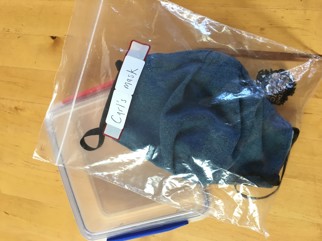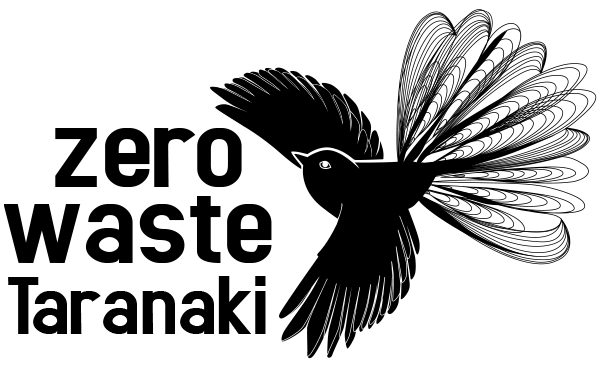Wearing a mask is an important way to keep yourself and others safe, by preventing the spread of Covid 19. A mask is required to enter indoor public spaces in Covid alert levels 2, 3 and 4.
Given masks will be a part of daily life for a while, it’s a good idea to purchase or sew several reusable face masks, which can be washed and worn again, avoiding waste. Single use face coverings are recommended to be worn only once and then thrown away, so create a lot of waste if used each day.
What type of reusable mask is recommended?
Reusable fabric masks are a good (and stylish!) option. They need to be made of a weave that is tight enough to be effective at containing droplets, while still allowing you to breathe easily. A mask needs to fully cover your nose, mouth and chin, and fit snugly but comfortably, moulded to your face and around your nose with no gaps.
While it might be easy, face coverings such as scarves and bandanas are not recommended by the Ministry of Health. Dust masks are also not recommended, as they have a one-way valve, which would allow droplets to spread if a person coughs or sneezes.
The World Health Organization (WHO) and New Zealand Ministry of Health suggest masks should have 3 layers to them. At least one layer should ideally be hydrophobic (repel moisture), such as wool or a synthetic fabric. To learn more, refer to the links at the bottom of this page.
How often should I wash my reusable mask?
Once your reusable mask has become damp, or has been used that day, you should carefully store it in a storage container or sealed bag, and then wash or sanitise your hands.
At home, wash the mask in hot water with detergent, either by hand or in a washing machine. Also wash the storage container or bag, or wipe it with alcohol. Dry your mask completely before you use it again. Do not use a damp face covering.
To have masks to swap in and swap out each day you will need several, so each member of your whānau can wear one, wash one and have access to a clean one. It is recommended to never share face coverings with others. To avoid confusion you can select different fabrics or types of masks, or label each mask with a name.
How can I make or sew a mask?
The Ministry of Health has simple instructions on how to make or sew your own mask on their website. There are also many guides, patterns and tutorials online to guide you in how to make a mask.

Where can I buy masks?
There are lots of producers of reusable masks across New Zealand that can be bought online. See the Buy New Zealand Made website and Urbanlist for a summary. Other online New Zealand providers include Luck.e, Kiwi Boutique and Sustainability Trust.
There are also a good range of local providers of reusable face masks. Some locally available masks with a hydrophobic layer include Aho Creative, The Hidden Smile, New Zealand Safety Blackwoods and Barkers.
How can I stop my glasses steaming up when I'm wearing a face mask?
One way to stop your glasses fogging up is to pull your mask up closer to where your glasses sit, then wear your glasses on top of your mask material. Your breath should miss your glasses when you do this.
If this doesn't work, you may want to buy a mask with an in-built adjustable metal wire over the nose, or adjustable toggles or two straps that go behind your head, so you can tighten your mask so it sits closer to your face. You can also try tying your mask ties to your glasses to help keep it in place. Have a read of this article for even more tips.
13 insider tips on how to wear a mask without your glasses fogging up, getting short of breath or your ears hurting (theconversation.com)
Can I recycle disposable masks?
If you work in healthcare or your workplace requires the use of disposable masks, you can order a recycling box for single use masks from TerraCycle. Find out how to buy one here and learn more on what masks are recycled into, and safety requirements for collections.
Note that disposable masks should not be placed in normal office or kerbside recycling bins.
How should I safely put on, wear and remove a mask?
The Ministry of Health and Unite Against Covid19 website have guidance on how to safely put on, wear and remove a mask.
While wearing your mask, the Ministry of the Health encourages:
- Not touching the front of the face mask. If you do, clean your hands and dry thoroughly.
- Avoiding touching your face, as infection can still be introduced by touching your eyes, or if you are not wearing your face mask correctly.
- Not moving your mask during use. This includes being pulled up or pulled down below your chin. If you need to remove your mask (for example, to eat), remove it safely, place in a sealed bag or container, and clean your hands.
- Replacing the face mask if it becomes damp, damaged or soiled.
Further information
The three mask layers recommended by the WHO are:
- The layer against your face should easily absorb droplets from exhaled breath. For example, a woven or knit cotton fabric. You may want to choose a light colour so you can tell when it is soiled or wet.
- The middle layer acts as a filter, and should be made of fabric that repels droplets and moisture, such as polypropylene.
- The outer layer should also repel droplets and moisture. Suitable fabrics include synthetic or polyester mixes.
To learn more, visit the following websites:
New Zealand Ministry of Health
World Health Organisation videos
World Health Organisation scientific advice
